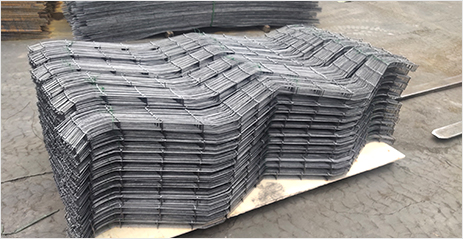
- Mobile Phone
- +8613931874955
- sales@cntcmetal.com
Understanding the Purpose and Applications of Cavity Ties in Construction and Architecture
Understanding Cavity Ties and Their Uses in Construction
Cavity ties are essential components in the construction industry, specifically used in cavity wall construction. These ties play a crucial role in ensuring structural integrity and stability by connecting the two leaves of a cavity wall. The cavity wall system consists of an outer wall and an inner wall, which creates a space or 'cavity' between them. This design is common in modern buildings because it provides excellent insulation, moisture control, and structural durability.
What Are Cavity Ties?
Cavity ties, often made of galvanized steel or stainless steel, are metal connectors typically installed at intervals along the height of the cavity wall. They serve to tie or anchor the two leaves of the wall together, thereby preventing any movement that may occur due to thermal expansion, wind loads, or differential settling. The design and spacing of cavity ties must comply with building regulations, which consider factors such as wall height, type of materials used, and environmental conditions.
Key Functions of Cavity Ties
1. Structural Stability The primary function of cavity ties is to ensure the stability of the wall system. By securely connecting the outer and inner walls, cavity ties help to resist lateral forces exerted by wind and seismic activity. This connection is vital for maintaining the overall integrity of the building.
2. Moisture Control Cavity walls are designed to manage moisture effectively. The gap between the two walls allows for drainage and ventilation, preventing water accumulation and subsequent problems like mold or decay. Cavity ties aid in maintaining the open cavity space, ensuring that moisture can drain away from the inner wall.
what are cavity ties used for

3. Thermal Efficiency The air gap created by cavity walls contributes to improved thermal insulation. Cavity ties help maintain this gap without compromising the insulation properties of the walls, thereby enhancing the energy efficiency of the building.
4. Load Distribution Cavity ties help in evenly distributing loads across the wall system. They ensure that any weight or pressure applied to the outer wall does not lead to excessive strain on the inner wall, thereby avoiding structural failures.
Installation and Considerations
Proper installation of cavity ties is critical to their effectiveness. The ties must be secured at appropriate intervals, typically specified by building codes. Factors that influence the spacing include the height of the wall, the proximity to openings (such as windows and doors), and the type of materials used in the wall construction.
Additionally, it is essential to consider the corrosion resistance of cavity ties, especially in environments with high humidity or exposure to saltwater. Using stainless steel or appropriately galvanized ties can significantly enhance durability and prevent rusting.
Conclusion
In summary, cavity ties are indispensable components in cavity wall construction. Their role in ensuring structural stability, moisture control, thermal efficiency, and load distribution cannot be overstated. Proper selection and installation of cavity ties are crucial to the longevity and safety of a building. As construction practices evolve and focus increasingly shifts toward sustainable building methods, the importance of components like cavity ties will remain significant, ensuring that modern structures are both robust and efficient.
share:
-
Yard Sign Stakes: Reliable Guardians of Outdoor SignsNewsAug.04,2025
-
Wall Ties: Invisible Guardians of Building StabilityNewsAug.04,2025
-
Resilient Web: The Super Guardian Power of Concrete MeshNewsAug.04,2025
-
Masonry Accessories: A versatile assistant on building foundationsNewsAug.04,2025
-
Iron Binding Wire: the 'invisible reinforcement specialist' in the fields of architecture and industryNewsAug.04,2025
-
Dynamic Spring: The diverse functions and excellent performance of Wire Tension SpringNewsAug.04,2025
-
Your Source for Concrete Wall Ties and Masonry AccessoriesNewsJul.10,2025



















